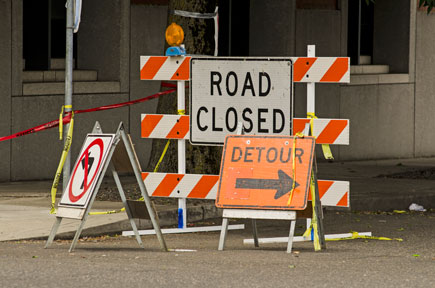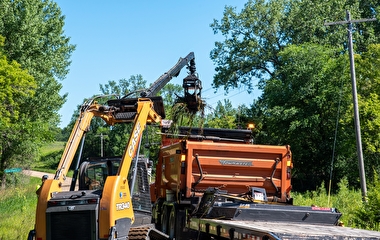When drivers encounter a work zone, they have a choice: go through or go around. But for traffic engineers, this choice represents a tricky problem. How do you predict the number of drivers who will divert around the work zone versus the number that will go through, in order to create an effective traffic management plan?
“The capability to accurately estimate the traffic diversion caused by work-zone delays and the capacity reduction associated with lane closures is of critical importance in developing effect traffic management plans,” says Eil Kwon, professor at the Department of Civil Engineering at the University of Minnesota Duluth (UMD), the principal investigator of this study. “However, the traffic planning models that had been used to address these problems require a very time-consuming process and an extensive origin/destination data set that is not easily available to practicing engineers.”
A new study from UMD researchers aims to help engineers solve this problem—and ultimately create better traffic management plans for their work zones.
The research team began with a set of traffic data that was collected from 12 work-zone sites in the Twin Cities’ freeway network. Next, the researchers analyzed the data to create a set of new traffic diversion models that relates the diversion rates at highway ramps to freeway delays and alternate-route travel times for different types of corridors. Finally, they developed an estimation process in which a freeway simulation model interacts with the newly created diversion estimation models until a convergence is achieved between diversion and resulting freeway delays. The research group also analyzed the capacity changes in work zones and determined a set of capacity values for the sections with lane closures.
“When we tested this model using both new and existing work-zone data, it showed very promising results,” Kwon says. “We believe this methodology can be used to effectively determine both the diversion rates and freeway delays for a given work zone without requiring origin/destination demand data.”
Based on their findings, the researchers have integrated their results into a guideline that can provide practical assistance to field engineers in estimating the traffic diversion rates and capacity reduction for work zones. These values can then be used to develop an accurate and effective work-zone traffic management plan.
In the future, researchers hope to develop a user-friendly, computerized process for field engineers, so that diversion rates at a given work zone can be determined in an efficient way.
The study was sponsored by the Minnesota Department of Transportation (MnDOT). “An accurate estimate of delay is an important component of a transportation management plan, and it is also very challenging,” says Tiffany Dagon, traffic work zone engineer with MnDOT’s Metro Division. “We are excited to have this new tool and look forward to using it during the design of upcoming projects.”


